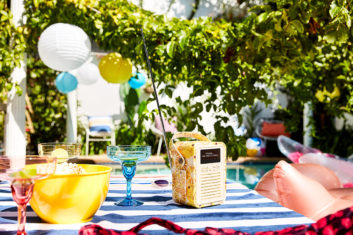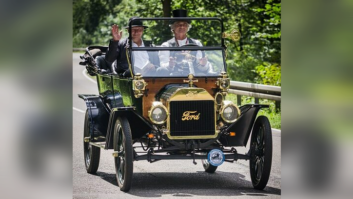
DAB+ is on the air in Australia’s five major metro markets plus several other cities. Commercial Radio Australia Chief Executive Officer Joan Warner has said, “DAB+ audiences have grown as a result of broadcasters enhancing their digital radio formats and car manufacturers continuing to add DAB+ radios to their vehicle ranges.” An estimated 2.8 million DAB+ receivers have been sold to date.
This is an excerpt from our interview with her in the recent ebook “Trends in Digital Radio 2021.”
RW: Many broadcasters ask whether they should invest in an over-the-air digital format when there’s so many other distribution channels.
Warner: They need to be a bit more strategic. We know that no mobile network can carry all of radio listening traffic live and local. If everybody tried to do all of their radio listening over a mobile network, the network would crash. We’d break the internet.
[Visit Radio World’s News Makers Page]
And I’m talking about live radio. Podcasting has yet to be proven to be the river of gold we think it will be. I mean, podcast listening is increasing in Australia and in the U.S., but it’s still a relatively small part of audio listening. And we need to work out how we monetize it.
But even telcos will say, “Yes, we don’t want all radio listening on our mobile network, because there’d be no room for anything else.” So, broadcasters have to step back and take a strategic look and say, “All right, where do we want to be?”
And our answer is, we want to be everywhere. We want to be, as broadcasters, accessible on every single platform we can be. That will be AM and FM in the medium term.
It could be the case in the future that people go, well, “Fifty percent of listening is on streaming, 40 percent is via DAB, so maybe it’s time to think about an AM and FM turnoff.” But that’s not on the radar at the moment. Not until we’ve got digital out into the regions.
So don’t pick a winner. You can’t afford to.
One of our broadcasters who had the same doubts about digital 10 years ago said, “We’re looking at this as defensive spending as well. If we don’t do it, someone else will jump in and grab that spectrum and offer a product that we could be offering.”
Now it’s, “Okay, how can we be more offensive with our DAB+? What are the benefits?” Incremental audience, extra revenue. We’ve got new stations — and we’re able to put all of these stations, including AM and FM, onto our industry RadioApp. Now we’ve got 400 available on one app, where normally we have only 11 commercial stations in a city in Australia.
RW: It sounds like your app is an important part of this conversation.
Warner: It’s important. I mean, listening on the internet still is at fairly low levels everywhere. Our research shows us, on average, about 15 percent of all listeners will listen to radio online, either via an app or on their PC, whatever they’re using.

But they are not only solely listening online, they’re listening sometimes to broadcast in the car or at home. There’s a common misperception, people will look at that 15 percent and go, “Oh, okay, 15 percent of all listening is done online.” No. It’s that 15 percent of listeners will listen at some stage online, but that’s not exclusive listening. Sometimes they’re also listening on their car radio or on a DAB radio at home.
The app has provided us an introduction into organizations like Google and Amazon to get all of Australian radio working properly on their speakers, first time, every time.
[Check Out More of Radio World’s Ebooks Here]
Prior to us having RadioApp, the accuracy on smart speakers when asking for an Australian radio station on Amazon was 23 percent. The accuracy on Google was 40 percent. As [speakers] became more popular, people got them out of the box and said, “Oh, please play Hit Radio Sydney for me,” and what they were coming up with was New York or Los Angeles, or nothing.
That’s a missed opportunity for radio to be back where it may not have been for a while, back in the bedroom or the living area.
So we saw it as a strategic play. It was easy to say to Google and Amazon, “You only need to deal with one organization here.” Now because of RadioApp, on those speakers we’ve got 400 stations including every AM and FM and DAB station in Australia, commercial plus the ABC plus SBS and all of their DAB stations. Four hundred radio stations. And there are 3,865 ways to ask for them — by saying the frequency, by saying the name of the station, by saying the name of the station and the town.
Find our Q&A with Joan Warner in the ebook “Trends in Digital Radio 2021.”







